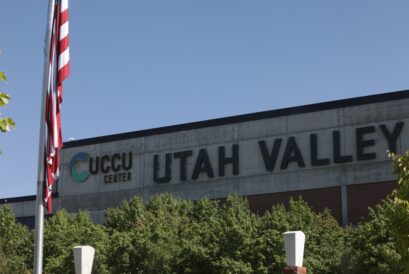Guest opinion: From grit to greatness — Utah’s moment to become a no-kill state
As someone who was born and raised in Utah, I know the spirit of our state: hard-working, forward-thinking and deeply committed to doing right by our communities — including our pet companions. Utah’s journey to becoming a no-kill state is a perfect example of how grit, compassion and perseverance can lead to greatness.
Across Utah, 55 of Utah’s 59 animal shelters have reached no-kill, saving at least 90% of the pets who come through their doors. This remarkable goal is within our grasp with just a few more shelters left to reach that benchmark.
There’s so much to celebrate. Utah’s shelters, rescue groups, volunteers and everyday community members have built a foundation of lifesaving that many states only dream of. Last February, Governor Cox signed a declaration proclaiming 2024 to be No-kill Shelter Year in Utah, voicing his very public support for Utah becoming a no-kill state, and a recent poll revealed that Utahns overwhelmingly support these efforts. This is a movement deeply rooted in who we are.
And yet, we are not there — yet.
The biggest opportunity for lifesaving lies in Utah County, where outdated practices and barriers around cat lifesaving are holding us back. Today, Utah County accounts for most of the cats killed in shelters. Recognizing where change can have the most immediate and powerful impact is essential to moving forward.
For decades, municipalities chose to kill outdoor cats in their attempt to control the number of free-roaming cats or resolve complaints. We know now that killing doesn’t work. If it did, Utah County wouldn’t still be facing the same challenges year after year. What does work — what communities across Utah and the country have proven — is Trap-Neuter-Vaccinate-Return, or TNVR. TNVR humanely stabilizes outdoor cat populations, conserves limited shelter resources and builds trust within communities.
Right here in Utah County, Celestial Zoo Pet Rescue is leading the way. Last year alone, they saved more than 1,700 cats through adoptions and TNVR, embodying the spirit of no-kill: compassion, innovation and community service.
One recent story shows just how transformational this approach can be — and why it should be the norm.
A local man, needing help with cats on his personal and business property, turned to the municipal shelter. He was told the only solution was to kill the cats. Unsure and afraid, he reached out to Celestial Zoo Pet Rescue instead. Volunteers from their Utah County Feral Cat Trap-Neuter-Return program met with him, listened without judgment and created a plan. They trapped, sterilized and vaccinated nearly 25 cats, found loving homes for some and even provided veterinary care for those in need.
No cats were killed. The cat population was stabilized. A community member was empowered and supported — not shamed or isolated.
The volunteer group was formed specifically to help people like him. They make it easy for county residents to seek help — connecting with them, facilitating trapping, spay/neuter, vaccination and return. This is exactly what should be happening every day in Utah County — and already is across most of the state.
Imagine the power of a culture and system where every shelter partnered with organizations like Celestial Zoo Pet Rescue instead of working against them. Imagine how much more quickly Utah could achieve the governor’s goal of a no-kill state if support and solutions, not killing, were the default response.
And yet, out-of-date local policies still block rescues like Celestial Zoo Pet Rescue from pulling cats from municipal shelters for TNVR. Laws like these no longer reflect the Utah of today. They belong to an era that prioritized rigid adherence to the past over innovation and lifesaving.
The truth is, no shelter, organization or leader can do this alone. It takes healthy working partnerships — between shelters, nonprofits, elected officials and the community. It takes courage to let go of practices that neither accomplish their intended purpose nor serve the greater good and wisdom to embrace those that do.
Friends, we should be exhausting every option before resorting to killing. Humane practices like TNVR, foster care, barrier-free adoptions and community support are not fringe ideas — they are mainstream best practices. They are the standard in communities that choose compassion over convenience.
Utah’s grit, honesty and willingness to lead have always been our strength. Let’s lean into that now. Let’s finish what we started.
Julie Castle is the CEO of Best Friends Animal Society.


